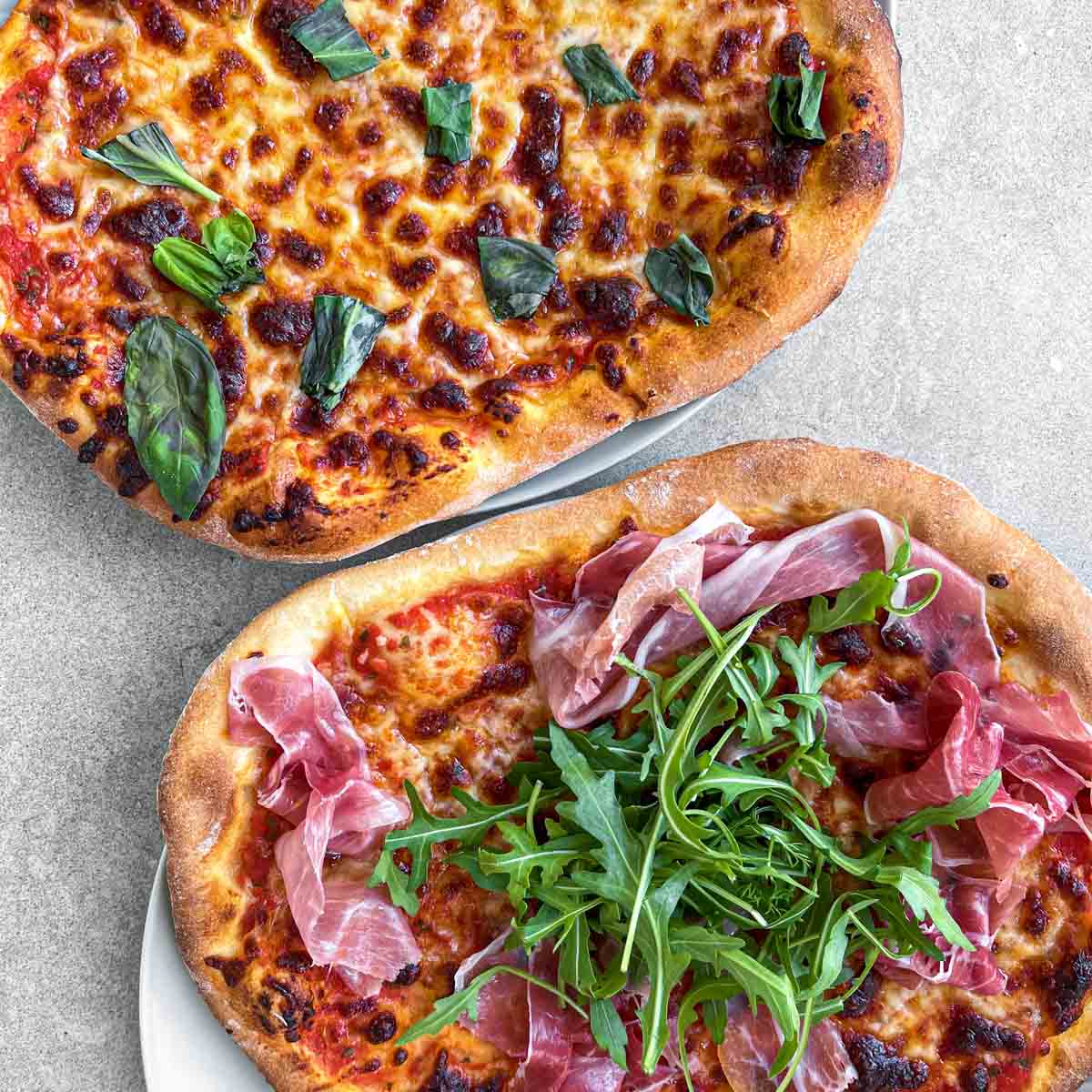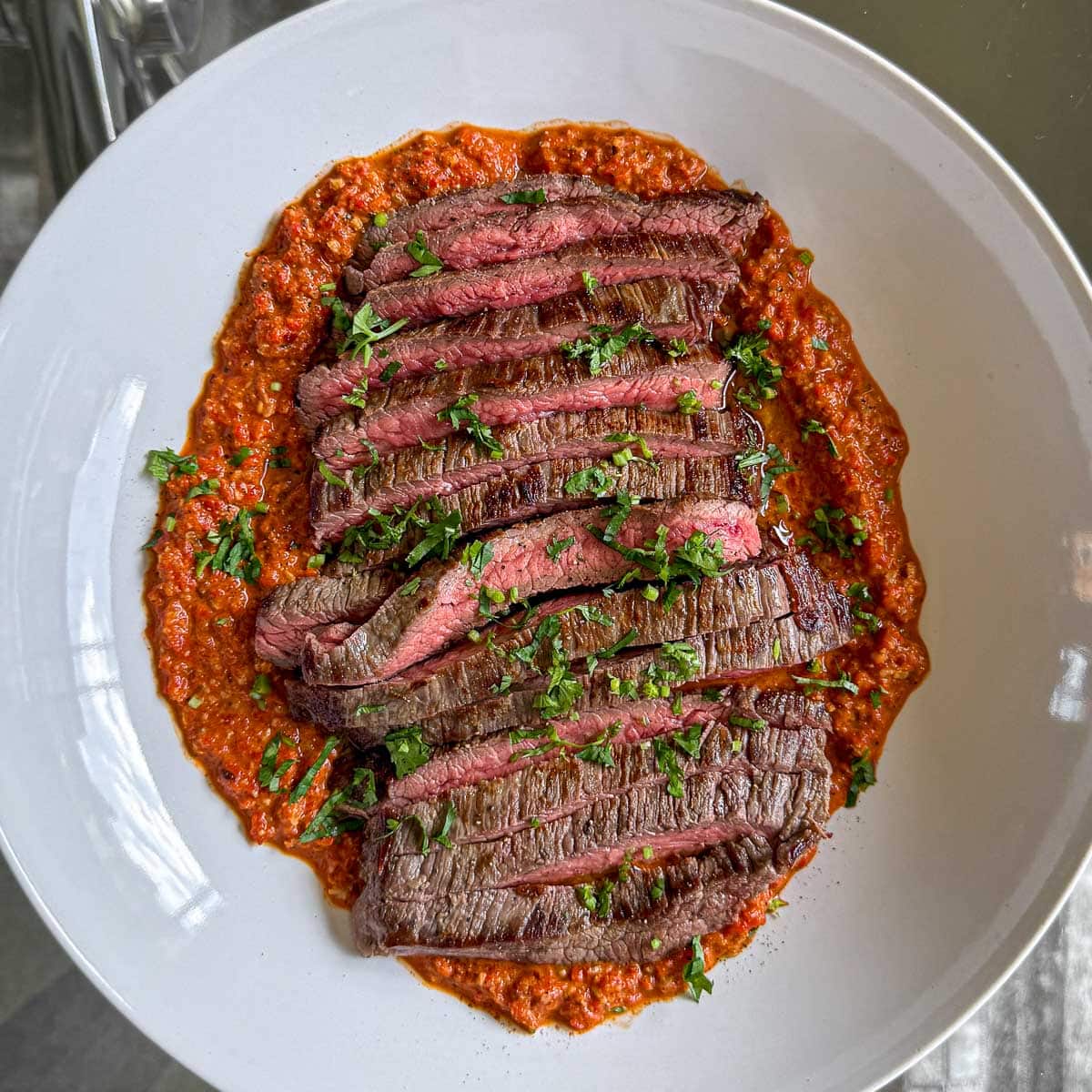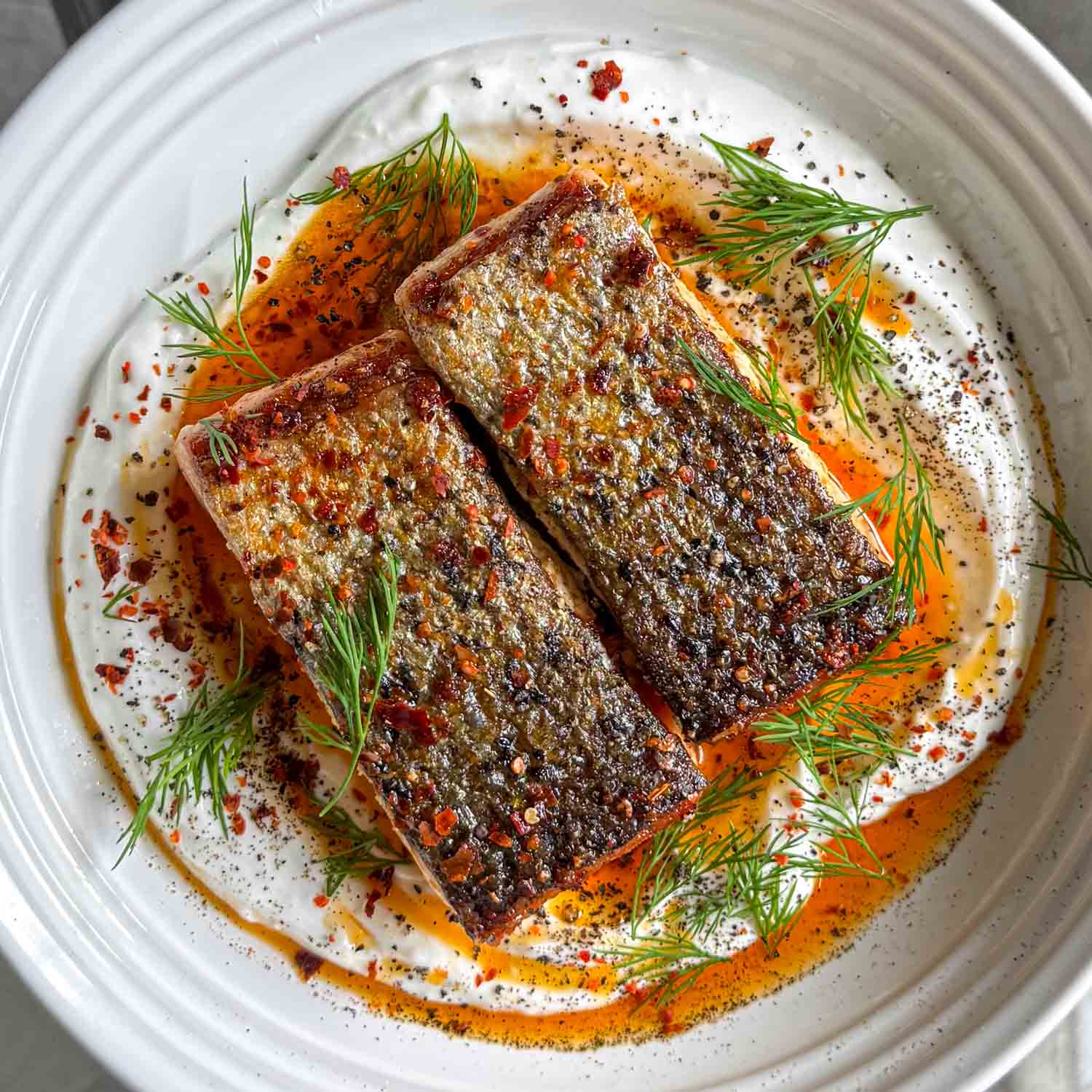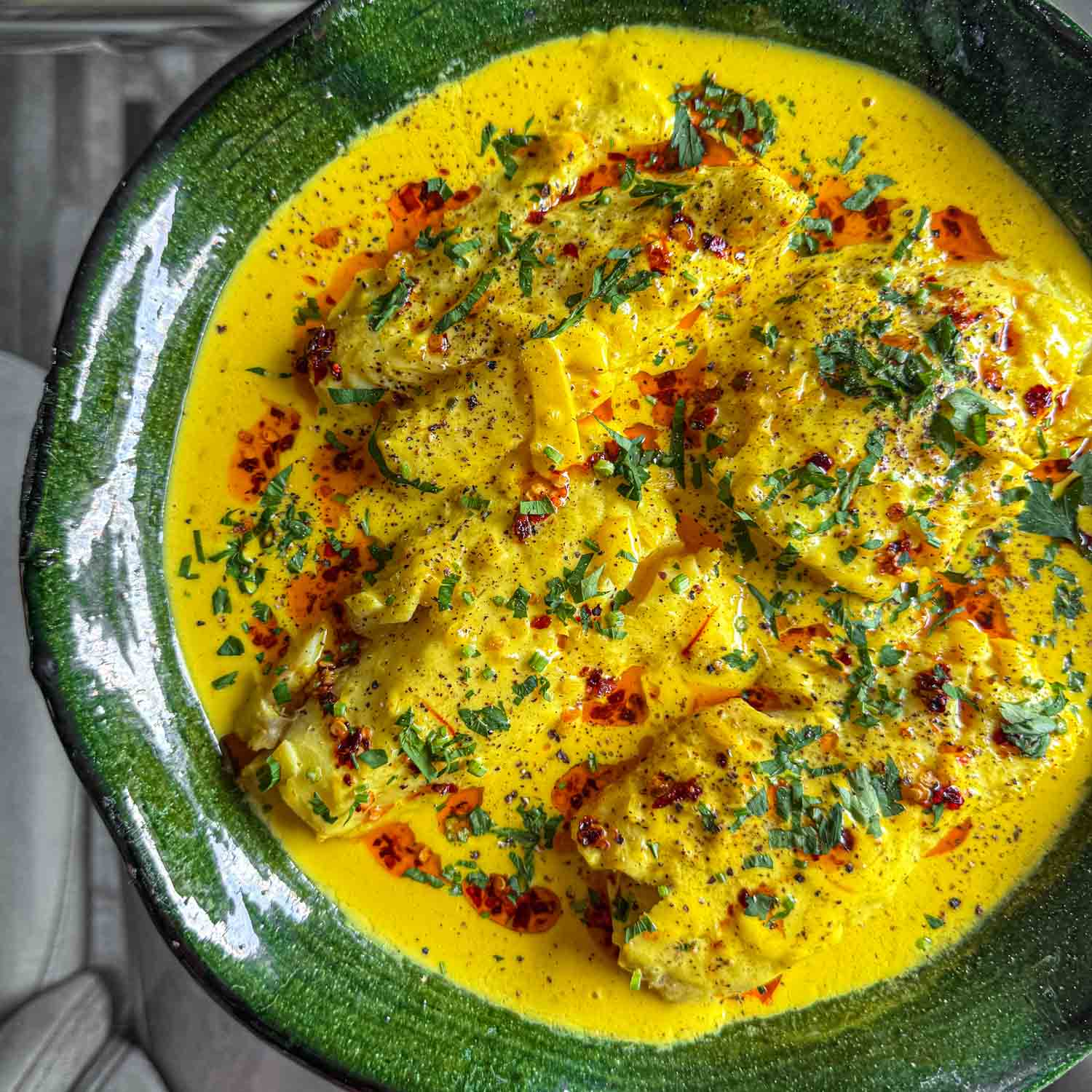Nothing beats the satisfaction of pulling a bubbling, golden pizza straight from your oven and these Easy Homemade Pizzas are not only tastier than shop-bought ones, they’re also far simpler to make than you might think. With a crisp, chewy base and a vibrant, fresh sauce, this recipe guarantees a pizza night to remember. Whether you prefer classic Margherita or a topping-loaded feast, this guide will walk you through everything you need to know.
Table of Contents
- Ingredient Breakdown
- Mastering the Dough
- The Sauce: Simple Yet Flavourful
- Baking Like a Pro: Heat, Timing, and Texture
- Toppings Done Right: Make it Your Own
- More Bread Based Recipes
Ingredient Breakdown
- Strong white bread flour: The key to a chewy, crisp crust.
- Active dried yeast: Helps the dough rise beautifully.
- Golden caster sugar: A touch of sweetness to activate the yeast.
- Extra-virgin olive oil: For flavour and texture in both the dough and the baking process.
- Fine sea salt: Essential for seasoning the dough properly.
- Plain flour: Prevents sticking when rolling out the dough.
- Crushed tomatoes or passata: The foundation of a bright, fresh sauce.
- Garlic: A single clove adds depth to the sauce.
- Fresh basil: Infuses the sauce with classic Italian flavour.
- Low-moisture mozzarella: Ensures a perfectly melted, non-soggy cheese topping.
- Your toppings of choice: Customise with vegetables, meats, or even a drizzle of pesto.
Mastering the Dough
A great pizza starts with a well-made dough, and mastering this step ensures the best result for these Easy Homemade Pizzas. The balance of ingredients is crucial: strong white bread flour provides structure, while extra-virgin olive oil enhances texture and flavour. The key to success lies in proper kneading. The dough starts sticky, but as you work it, the gluten develops, creating elasticity. Aim for around ten minutes of kneading. This strengthens the dough, making it easier to shape later.
Yeast is another essential factor. If it doesn’t foam after activation, it’s inactive and won’t allow the dough to rise. Once mixed, the dough needs time to rest. During proving, yeast ferments the sugars in the flour, producing carbon dioxide, which creates the airy pockets that give pizza its signature chew. Let the dough double in size before punching it down to release excess gas. This makes for a lighter, more even crust.
Temperature plays a role, too. A warm, draught-free environment is ideal for proving, but patience is key. Slow fermentation, such as refrigerating the dough overnight, deepens the flavour, resulting in a complex, slightly tangy taste. If time allows, this step is worth incorporating for the best homemade pizza base.
The Sauce: Simple Yet Flavourful
A great pizza sauce is more than just a layer of tomatoes, it’s the foundation of flavour. Unlike cooked sauces used for pasta, an uncooked sauce keeps the brightness and natural sweetness of the tomatoes intact. The choice of tomatoes matters: San Marzano or high-quality crushed varieties work best, offering a balanced acidity without bitterness.
Garlic is another essential ingredient, but its use should be subtle. A single minced clove enhances the sauce without overpowering the tomato’s freshness. Fresh basil adds an aromatic depth, but it should be finely chopped and mixed in just before use. This prevents oxidation, which can turn the basil dark and slightly bitter.
Seasoning is simple but precise. A pinch of sea salt is essential to enhance the natural flavours, while freshly ground black pepper adds a gentle heat. Some prefer a drizzle of extra-virgin olive oil for added richness, but balance is key. Too much can make the pizza greasy. Once prepared, allowing the sauce to rest in the fridge for at least 30 minutes helps the flavours meld, creating a harmonious base for the toppings.
Baking Like a Pro: Heat, Timing, and Texture
Achieving the perfect homemade pizza crust depends largely on how it’s baked. The high temperatures of professional pizza ovens, often exceeding 400°C, are hard to replicate at home, but simple techniques can still deliver a crisp, golden result.
Preheating the oven is non-negotiable. A temperature of 250°C (fan 230°C) ensures the dough puffs up quickly, giving it the signature airy texture. Placing the pizza directly on the oven base mimics the effect of a stone oven, allowing the underside to cook rapidly and preventing a soggy middle. A preheated pizza stone or baking steel works even better, retaining heat and distributing it evenly across the base.
Baking time is just as important. Homemade pizzas cook in as little as eight to ten minutes. Overcooking can dry out the base, while undercooking leaves the centre doughy. Checking for signs of doneness, like bubbling cheese and a deep golden crust, helps achieve the ideal texture. For an extra-crisp finish, a final minute under the grill can enhance caramelisation.
Toppings Done Right: Make it Your Own
The beauty of Easy Homemade Pizzas lies in their customisation, but topping placement and choice can make or break the final result. Layering is key: too many toppings can weigh down the dough, preventing proper cooking, while unevenly spread ingredients lead to bites that are either overloaded or lacking in flavour.
Moisture content is another crucial factor. Certain vegetables, such as mushrooms, courgettes, and peppers, release water when baked. Pre-cooking them helps reduce excess liquid, ensuring a crisp base. Similarly, fresh mozzarella is delicious but contains high moisture. Using low-moisture mozzarella prevents a watery pizza.
When it comes to meats, pre-cooking is often necessary. Most cured meats, such as pepperoni or prosciutto, are fine straight from the pack, but raw meats like chicken or sausage need cooking beforehand. Since pizzas bake quickly, raw meat won’t have enough time to cook through.
Finishing touches elevate the final pizza. A drizzle of high-quality olive oil, a handful of fresh basil, or even a sprinkle of chilli flakes can add depth. These additions should be added after baking, preserving their delicate flavours and textures.
More Bread Based Recipes
If you enjoyed making these Easy Homemade Pizzas, why not try your hand at a few other bread based recipes I have:
- No-Knead Focaccia: This no-knead focaccia is so easy to make and you don’t need any fancy equipment. Perfectly crisp on the outside and soft and light on the inside.
- Garlic Rolls: These buttery, pull-apart garlic rolls are super soft and pillowy, slathered with a delicious homemade garlic herb butter and baked until nice and golden.
- Quick and Easy Flatbreads: All you need is 5 ingredients, 1 bowl and 1 pan. The result: soft, fluffy flatbreads with the perfect amount of chew.
- New York Style Bagels: Crunchy on the outside and perfectly chewy in the middle, these homemade bagels are easier to make than you might think. They just take a little bit of time, which makes them perfect for a weekend baking project.
See how I make all these recipes and more over on my Instagram!
Easy Homemade Pizzas
5 Stars 4 Stars 3 Stars 2 Stars 1 Star
No reviews
Homemade pizzas are so much nicer than shop bought ones, and they’re much easier to make than you’d think! The dough comes together without any fancy equipment. It makes for a thin, crisp base with the perfect amount of chew. The sauce is even simpler to make. All you need are good-quality tinned tomatoes, garlic, fresh basil and salt. Toppings wise, it’s entirely up to you!
- Author: zenak
- Prep Time: 30 minutes
- Total Time: 1 hour 35 minutes
- Yield: 4 1x
Ingredients
For the dough:
- 300 ml lukewarm water
- 1 x 7g sachet active dried yeast
- ½ tbsp golden caster sugar
- 2 tbsp extra-virgin olive oil
- 1 ½ tsp fine sea salt
- 500g strong white bread flour
- plain flour, for dusting
For the sauce:
- 1 x 400g tin very good-quality crushed tomatoes or passata
- 1 small garlic clove, minced
- a few fresh basil leaves, finely chopped
For the pizza:
- extra-virgin olive oil
- 250 g low moisture mozzarella, grated
- your toppings of choice
Instructions
I recommend reading the notes below before you start cooking.
- Whisk the water, yeast and sugar in a large bowl and let sit 5 minutes. It should get foamy, or at the very least, creamy. If it doesn’t, your yeast is dead and you’ll need to start again with fresher yeast.
- Add the extra-virgin olive oil, salt and flour and mix until a shaggy dough forms.
- Turn the dough out onto a floured work surface. Knead until smooth, springy and no longer sticky, around 10 minutes. Note: it’ll feel very sticky at first but as you knead it, it’ll become less and less sticky. If it’s still very sticky after the 5 minute mark, you can add a little more flour.
- Place the dough in a lightly floured or oiled bowl, cover with cling film and leave in a warm place to prove for 1 hour, or until doubled in size.
- Meanwhile, make the sauce by combining the crushed tomatoes, minced garlic and finely chopped basil. Season with sea salt and freshly-ground black pepper, to taste, then cover and refrigerate until you’re ready to make your pizzas.
- Punch down the dough to expel the air then turn it out onto a floured work surface and knead it for 1 minute to further deflate it.
- Preheat your oven to 250°C/ fan 230°C. Divide the dough into 4 portions and roll each of them into a ball. Flour them lightly, cover with cling film and let sit 15 minutes. This allows the dough to relax, which makes rolling it out thinly much easier.
- Using a floured rolling pin, roll each dough ball out into a rough circle, around ½ cm thick.
- Tear off 4 pieces of foil, large enough to fit each pizza. Lightly grease each sheet with extra-olive oil then dust them lightly with flour.
- Place the pizzas on the foils. Spread two heaped tablespoons of sauce onto the base of each pizza, spreading it out almost to the edges. Sprinkle the mozzarella and any other toppings of choice (remember to consider moisture content!).
- Place the pizza on the base of your oven, either 1 or 2 at a time depending on the size of your oven. This is key to achieving a golden bottom! Bake for 8 to 10 minutes, or until the crust is golden and crisp and the cheese has melted. Bake the remaining pizzas, then serve and enjoy!
Notes
- The sauce: there are two schools of thought when it comes to pizza sauce: precooked and uncooked. I’m team uncooked – it adds some much needed brightness and balance. The key here is using very good-quality tinned tomatoes, preferably of the San Marzano variety.
- Toppings: you can get as creative as you want with your toppings, as long as you take moisture content into account. For example, I prefer the taste of fresh mozzarella but I use the low moisture variety for my homemade pizzas because the fresh stuff can get a little soggy and soupy, even when you drain it. The same applies to other toppings. If you want to add water-rich vegetables (e.g. courgette, peppers and mushrooms), I recommend pre-cooking them. I also recommend pre-cooking meats. The pizzas cook so fast that most meats won’t have time to cook through.
You’ll also love
No related posts.





